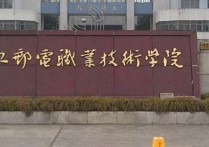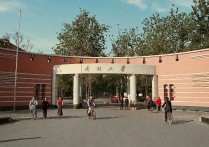华科电学分析考什么 华中科技大学对专科生考研要求
想考华中科技大学电子信息工程,考研时的专业课大纲是什么?考研华中科技大学电气专业参考书,华中科技大学电气学院专业课电路理论参考书。
本文导航
华中科技大学对专科生考研要求
我在华科读电信.
专业课一般是选信号与系统.我们学的是奥本海姆的课本,很厚的一本,砖头一样.建议用此书复习专业课.我们系考本系就用这书.
外校考研的话,早点开始准备,如果分不高的话非常危险,本系招外校考研的不多.
把数学和专业课考高了,就好办了.
09年的信号专业课考研大纲如下.如果你是2010年考研,可以参考下.
824《信号与线性系统》大纲
第一部分 考试说明
一. 考试性质
全国硕士研究生入学考试是为高等学校招收硕士研究生而设置的。其中,《信号与线性系统》实行按一级学科统考。它的评价标准是高等学校优秀本科毕业生能达到的及格或及格以上水平,以保证被录取者具有基本的专业水平,并有利于各高等学校的择优选拔。
考试对象为参加2009年全国硕士研究生入学考试的考生。
二. 考试形式与试卷结构
(一) 答卷方式:闭卷,笔试。
(二) 答题时间:180分钟。
(三) 各部分内容的考试比例(满分150分)
信号与线性系统:150
(四) 题型比例
填空、判断题:20%
证明、计算题:80%
(五)参考书目
(1)A.V.OPPENHEIM,A.S.WILLSKY,S.HAMD NAWAB,信号与系统 (第二版),电子工业出版社,2002年
(2) 管致中,夏恭恪,孟桥,信号与线性系统 (第四版),高等教育出版社,2004年
(3) 郑君里,应启珩,杨为理,信号与系统 (第二版),高等教育出版社,2000年
(4) 吴大正,杨林耀,张永瑞,王松林,郭宝龙,信号与线性系统分析 (第4版),高等教育出版社,2006年
(5) 含有以下考查要点要求内容的其它任何参考书。
第二部分 考查要点
一. 信号与系统
(Signals and Systems)
1. 信号、系统的概念
(Concepts about signals and systems)
2. 常用信号及其性质
(Commonly used signals and their properties)
3. 信号的波形图、基本运算与奇、偶分解
(Waveform of signals, transformation of the independent variable, even and odd decomposition of signals)
4. 单位冲激信号和单位阶跃信号的概念及性质
(Unit impulse and unit step functions and their properties)
5. 系统的基本性质
(Basic system properties)
二.线性时不变系统
(Linear Time-invariant Systems)
1. 线性时不变系统的性质
(Properties of linear time-invariant systems)
2.线性时不变系统的零输入响应
(Zero-input response of linear time-invariant systems)
3. 线性时不变系统的零状态响应
(Zero-state response of linear time-invariant systems)
4. 卷积积分的性质及计算
(Properties and computation of convolution integral)
5.卷积和的性质及计算
(Properties and computation of convolution sum)
6.连续线性时不变系统的单位冲激响应和单位阶跃响应
(Unit impulse response and Unit step response of continuous-time LTI systems)
7.离散线性时不变系统的单位取样响应和单位阶跃响应
(Unit sample response and Unit step response of discrete-time LTI systems)
8.线性常系数微分方程的时域解法
(Solution of Linear constant-coefficient differential equations in time-domain)
9.线性常系数差分方程的时域解法
(Solution of Linear constant-coefficient difference equations in time-domain)
三.周期信号的傅里叶级数表示
(Fourier series representation of periodic signals)
1. 线性时不变系统的特征函数
(Eigen-function of linear time-invariant systems)
2. 连续时间周期信号的傅里叶级数表示
(Fourier series representation of continuous-time periodic signals)
3.连续时间傅里叶级数的性质
(Properties of CTFS)
4. 离散时间周期信号的傅里叶级数表示
(Fourier series representation of discrete-time periodic signals)
5. 离散时间傅里叶级数的性质
(Properties of DTFS)
6. 周期信号的频谱
(Spectrum of periodic signals)
7. 周期信号激励下线性时不变系统的响应
(Response of LTI systems for periodic input signals)
8. 理想低通、高通、全通、带通、带阻滤波器
(Ideal low-pass, high-pass, all-pass, band-pass and band-stop filters)
四.连续时间傅里叶变换
(The Continuous-time Fourier Transform)
1. 连续时间傅里叶变换及非周期连续信号的频谱
(CTFT and the spectrum of continuous-time non-periodic signals)
2. 连续周期信号的傅里叶变换
(Fourier transform of continuous-time periodic signals)
3. 连续时间傅里叶变换的性质
(Properties of CTFT)
4.连续线性时不变系统的频率响应 、幅度频率响应 、相位频率响应 (或 )
(The frequency response of continuous-time LTI systems and its magnitude and phase )
5. 连续线性时不变系统的频域分析
(Analysis of continuous-time LTI systems in frequency domain)
6.无失真传输
(Transmission without distortion)
7.线性相位的概念
(Concept of linear phase)
五.离散时间傅里叶变换
(The Discrete-time Fourier Transform)
1. 离散时间傅里叶变换及非周期离散信号的频谱
(DTFT and the spectrum of discrete-time non-periodic signals)
2. 离散周期信号的傅里叶变换
(Fourier transform of discrete-time periodic signals)
3. 离散时间傅里叶变换的性质
(Properties of DTFT)
4.离散线性时不变系统的频率响应 、幅度频率响应 、相位频率响应 (或 )
(The frequency response of discrete-time LTI systems and its magnitude and phase )
5. 离散线性时不变系统的频域分析
(Analysis of discrete-time LTI systems in frequency domain)
六.连续时间信号的取样
(Sampling of continuous-time signals)
1.冲激取样的原理
(Principle of impulse-train sampling)
2.取样定理
(Sampling Theorem)
3.由取样值重建原始连续时间信号的方法
(Methods of reconstructing the original continuous-time signals from its samples)
七.拉普拉斯变换
(The Laplace Transform)
1. 拉普拉斯变换及其收敛域
(The Laplace transform and its region of convergence)
2. 拉普拉斯逆变换
(The Inverse Laplace transform)
3. 拉普拉斯变换的性质
(Properties of the Laplace transform)
4.连续时间系统的系统函数
(System function of continuous-time systems)
5.系统函数与系统因果性和稳定性的关系
(Relationships between system function and the causality and stability of LTI systems)
6. 由系统函数的极-零图绘制一阶或二阶系统的频率特性曲线
(Geometric evaluation of the frequency response of first-order or second-order LTI systems from the pole-zero plot of )
7.利用拉氏变换求零状态响应
(Solving the zero-state response using the Laplace transform)
8.连续系统的框图表示
(Block diagram representations of continuous-time LTI systems)
9.信号流图表示与梅森公式
(Signal flow graph representations of LTI systems and Mason’s Formula)
10.单边拉普拉斯变换及其性质
(The Unilateral Laplace transform and its properties)
11.利用单边拉普拉斯变换求解线性常系数微分方程
(Solving differential equations using the unilateral Laplace transform)
八.Z变换
(The z-Transform)
1. Z变换及其收敛域
(The z-transform and its ROC)
2. 逆Z变换
(The Inverse z-transform)
3. Z变换的性质
(Properties of the z-transform)
4.离散时间系统的系统函数
(System function of discrete-time systems)
5.系统函数与系统因果性和稳定性的关系
(Relationships between system function and the causality and stability of LTI systems)
6. 由系统函数的极-零图绘制一阶或二阶系统的频率特性曲线
(Geometric evaluation of the frequency response of first-order or second-order LTI systems from the pole-zero plot of )
7. 利用Z变换求零状态响应
(Solving the zero-state response using the z-transform)
8.离散时间系统的框图表示
(Block diagram representations of discrete-time LTI systems)
9. 单边Z变换及其性质
(The Unilateral z-transform and its properties)
10.利用单边Z变换求解线性常系数差分方程
(Solving difference equations using the unilateral z-transform)
华中科技大学电气工程研究生专业
一般哪个学校招收研究生考试用的教材就是他们本科生学习用的教材,下面的链接是他们本科生培养方案里面列举的学习课程和教材,你参看一下。重点看看学校自己出版的 http://ceee.hust.edu.cn/article_s.aspx?cid=1238 八、教材及参考书
Fundamentals of Electric Circuits. Charles K. Alexander, Matthew N. O. Sadiku . 清华大学影印原版,2000年
电路理论-电阻性网络.黄冠斌主编. 华中科技大学出版社. 2000年
电路理论-时域与频域分析.杨传谱主编. 华中科技大学出版社. 2000年
电路理论-端口网络与均匀传输线.陈崇源主编. 华中科技大学出版社. 2000年
电路理论基础(上、下册). 汪建主编.华中科技大学出版社. 2002年
华科电气学院研究生电路原理
现在华科用的电路有三种,西边用的是电气编的,简单一点,东边用的是电信编的,难一点,电气在西边。所以是那本很厚很大的那本书。另外高压所全国最强的,不是一般的强人是考不进来的。














